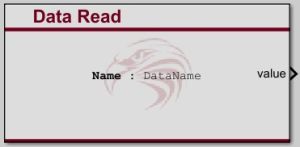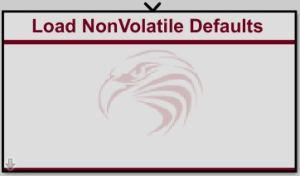Raptor-Dev-Data-Storage-Library
New Eagle > Products Wiki > Raptor Platform > Raptor-Dev > Raptor-Dev Library > Raptor-Dev Data Storage

The blocks in this subsystem are used to define, configure, and access application data.
Blocks
| Block | Description | Appearance |
|---|---|---|
Adjustment |
The Raptor adjustment block is used to make values available within the calibration tool. An adjustment is a value which is typically written from the calibration tool. |
 |
Data Store Definition |
The Raptor data definition block defines a data store item which can be accessed with the data read and data write blocks. The data in the data store can also be made available in the calibration tool. |
 |
Data Read |
The Raptor data read block is used to read to the value of a data store. A data store is typically defined with a data definition block, however the measurement, adjustment, override and table lookup blocks also create data stores which can be accessed with the data read block. |
 |
Data Write |
The Raptor data write block is used to write to the value of a data store. A data store is typically defined with a data definition block, however the measurement, adjustment, override and table lookup blocks also create data stores which can be accessed with the data write block. |
 |
Load Non-Volatile Defaults |
The Raptor restore non volatile defaults block triggers the module to restore the initial values defined in the program blocks to all non volatile variables. |
 |
Measurement |
The Raptor measurement block is used to make values available within the calibration tool. A measurement is a value which typically read only within the calibration tool. |
 |
Non-Volatile Startup |
This block is used to define the behavior of NonVolatile variables on startup after reprogramming. Variables can either be reloaded with the defaults when the module is programmed, or if Keep Saved Values is selected the values of the NonVolatile memory will mainatined from the previous program. If the structure of the NonVolatile memory changes (variables are added or removed), then it will not be possible to keep the saved values and all NonVolatile items will be restored to their default when the module is programmed. If this block is not present in the model the NonVolatile memory will be restored to default when the module is programmed. |
 |
Override |
The Raptor override block is used to be able to override the value on a wire from the calibration tool. The block will normally pass the value at the input port to the output port. However when the override state is set to Override the block will output the value input from the calibration tool. |
 |
Store Non-Volatile |
The Raptor Store Non Volatile block triggers the module to store all Non Volatile values. This is typically done during the shutdown process. |
 |